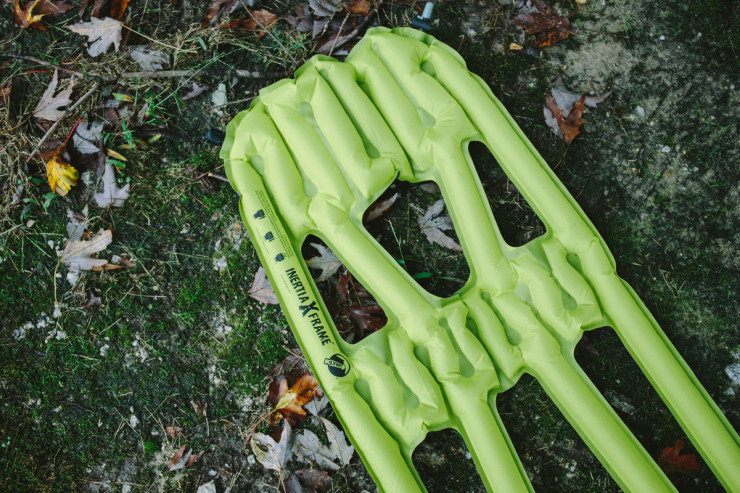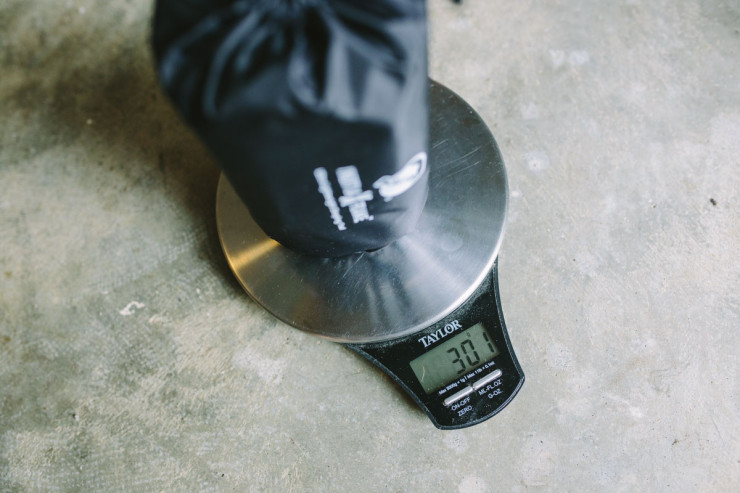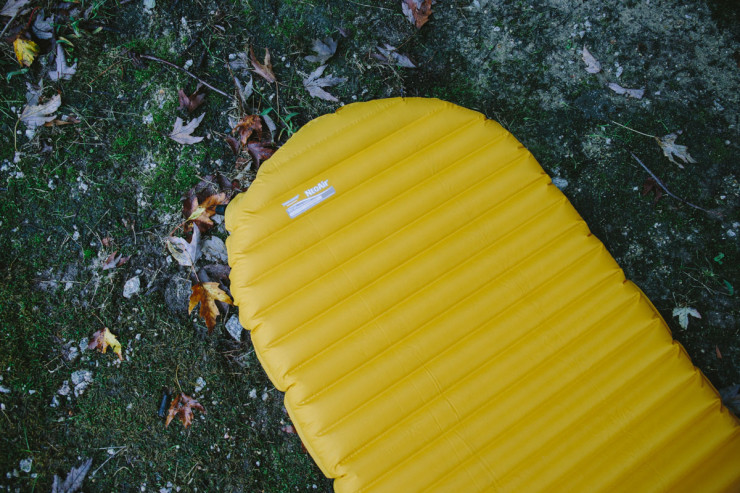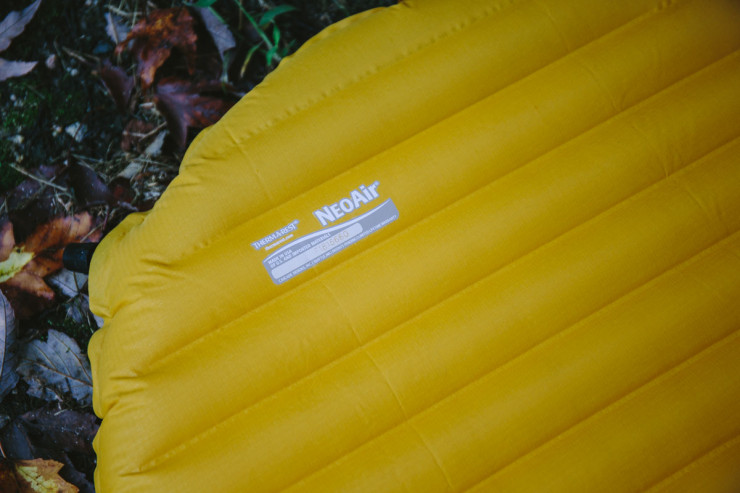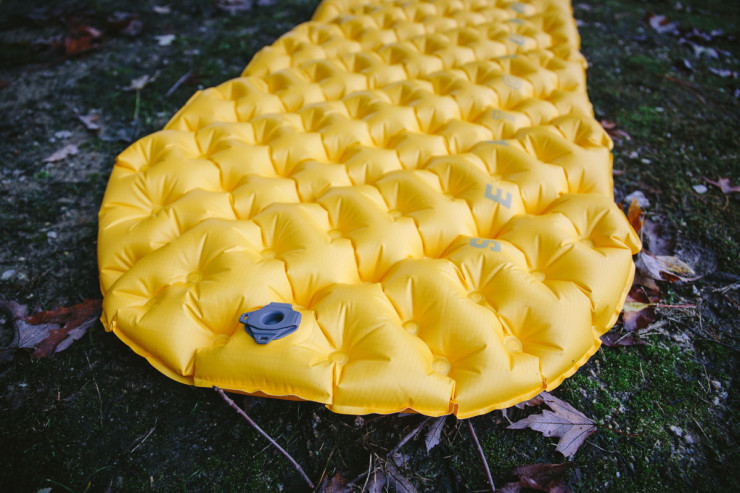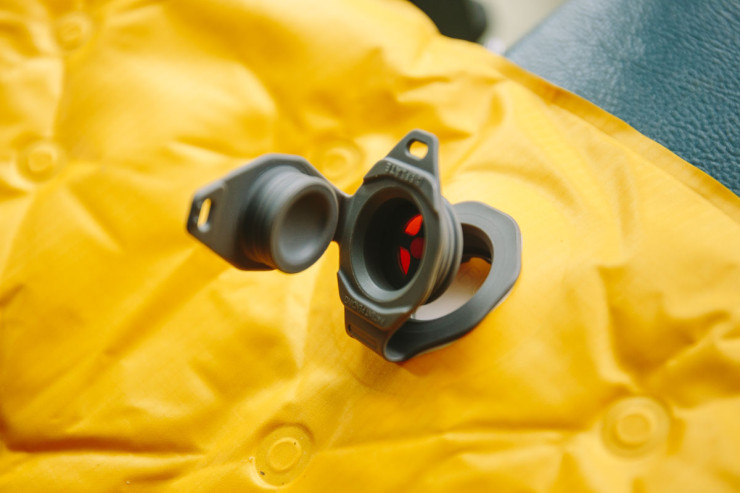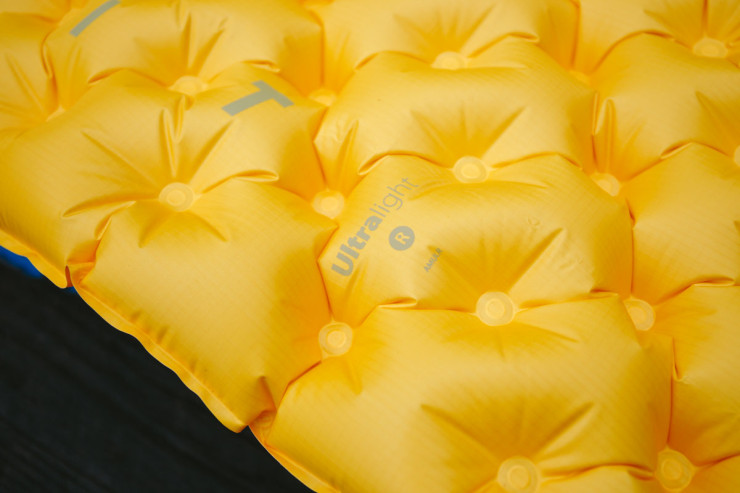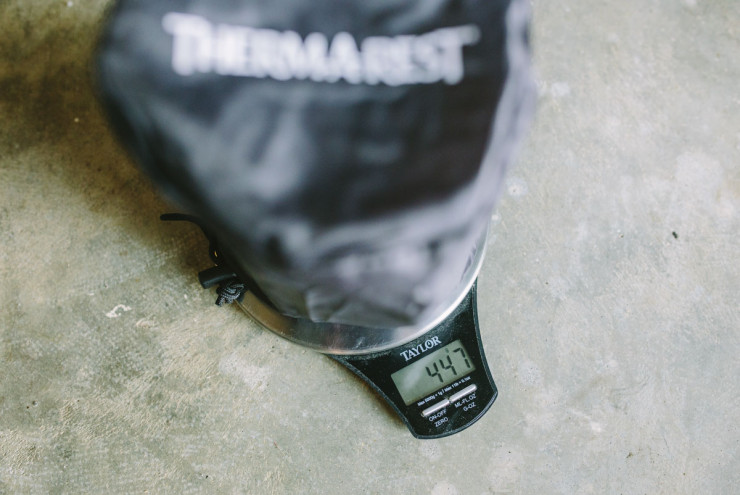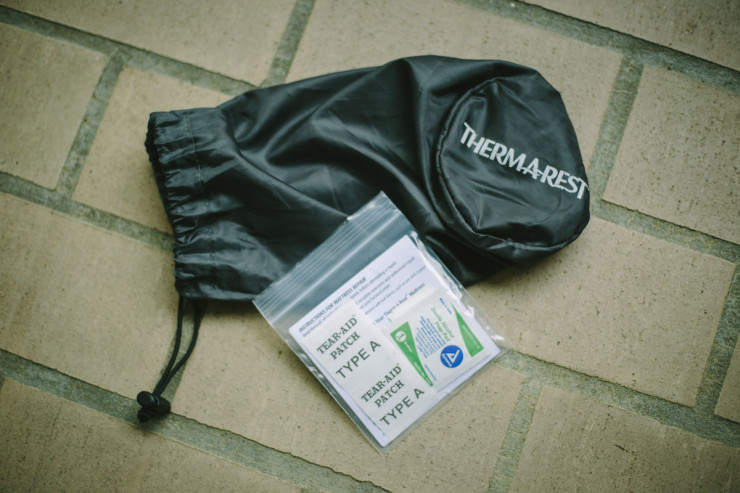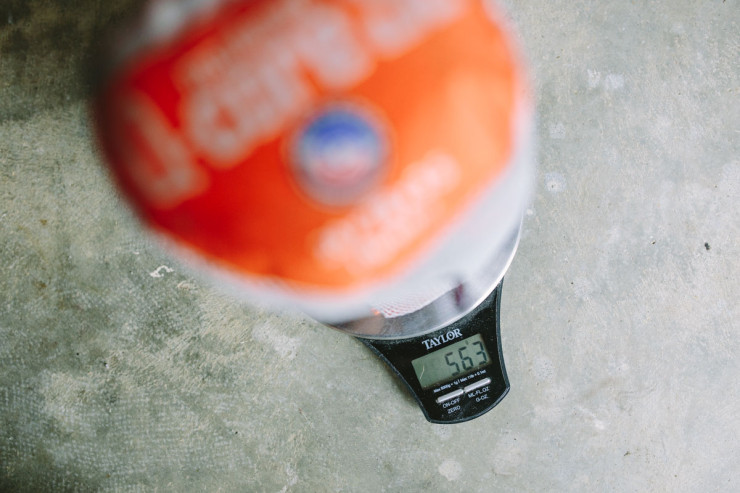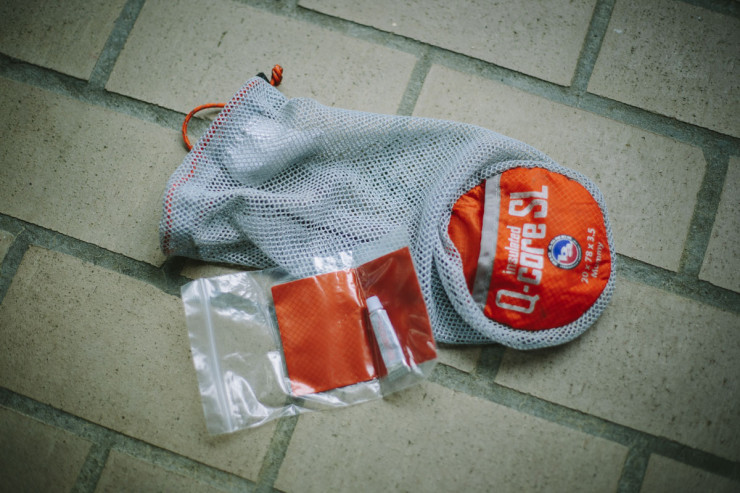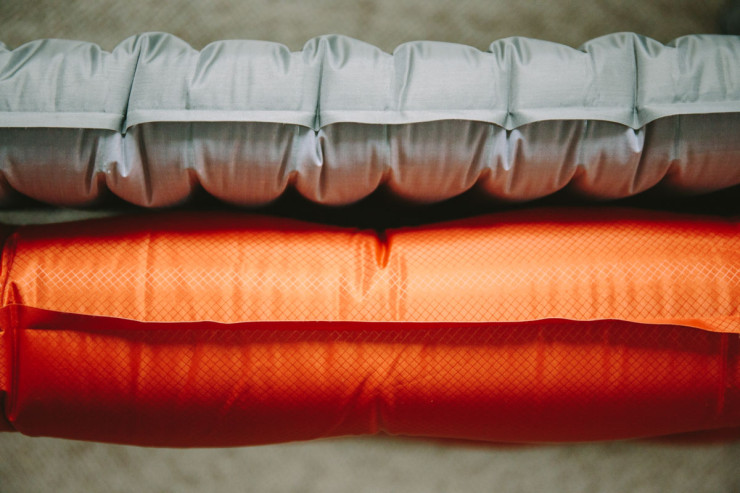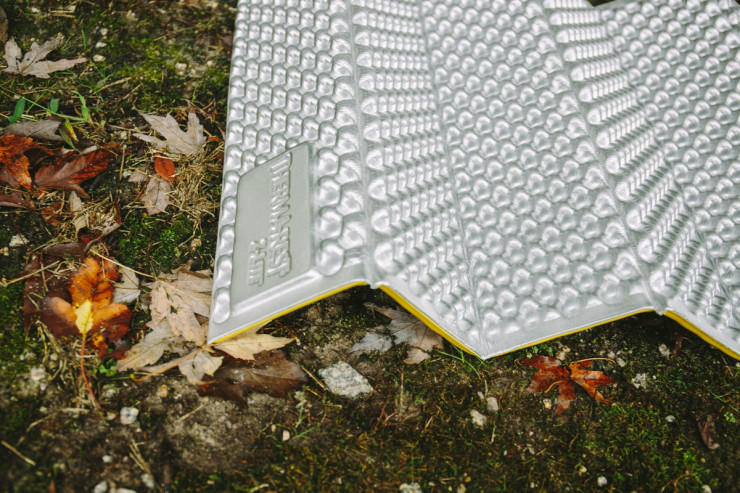Ultralight Sleeping Pads for Bikepacking: The Inflatable Shootout
If you’re reading this, you probably appreciate the benefits of a comfy sleeping pad after a long, hard day in the saddle. These days, they can take all shapes and forms, from simple foam mats to technology laden air affairs. For those who prefer to pamper their spines, here’s our thoughts on some of the best ultralight inflatable mattresses available.
PUBLISHED Oct 6, 2015
Choosing an Ultralight Sleeping Pad for Bikepacking and Bike Touring
Choosing the right sleeping sleeping pad can make the difference between a rejuvenating rest and a fitful night tossing and turning. For most people, a sleeping pad is a necessity on any bikepacking trip, whether it’s an overnighter in the woods, or a multi-week dirt road tour. A quality pad not only provides comfort, but also adds extra insulation on chilly nights. Factors and features to consider are weight, packed volume, the position you sleep and added ‘R-value’ – the pad’s ability to retain warmth. Durability of the fabric, as well as the energy and time it takes to inflate, are also important elements.
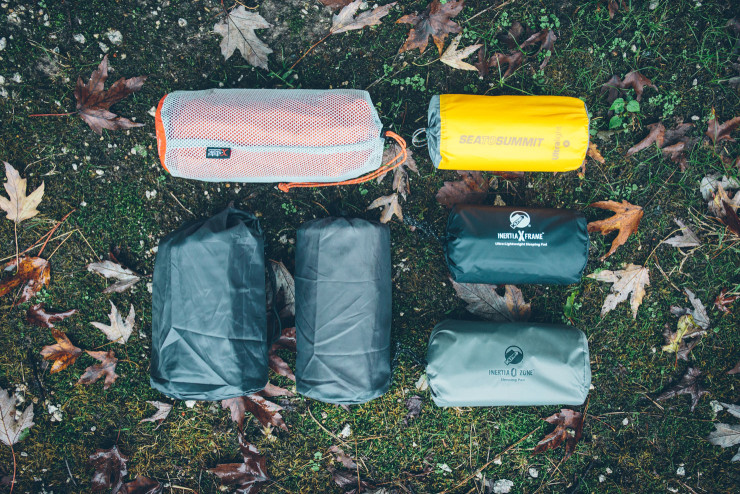
Compared to standard inflatable sleeping pads, the latest models can offer a significant reduction to both the overall weight and volume of your setup, without compromising the quality of your sleep.
Over the past year we’ve tested 6 ultralight sleeping pads, for varying amounts of time. Here are our findings, complete with specs, notes and impressions, ordered by weight. After the list you’ll find a comparison and conclusion. Have thoughts on a sleeping pad we haven’t included? Drop us a comment and let us know.
Klymit Inertia X-Frame
At first glance, you’ll either embrace the X-lite as a minimalist gram-concious stroke of genius, or dismiss it as a silly gimmick. Either way, when Klymit designed the award-winning Inertia X Frame, they rewrote the rules of what constitutes an ultralight air mattress. The X Frame is a full-length sleeping pad built for those who look at their pack list in milligrams… and sleep on their back.
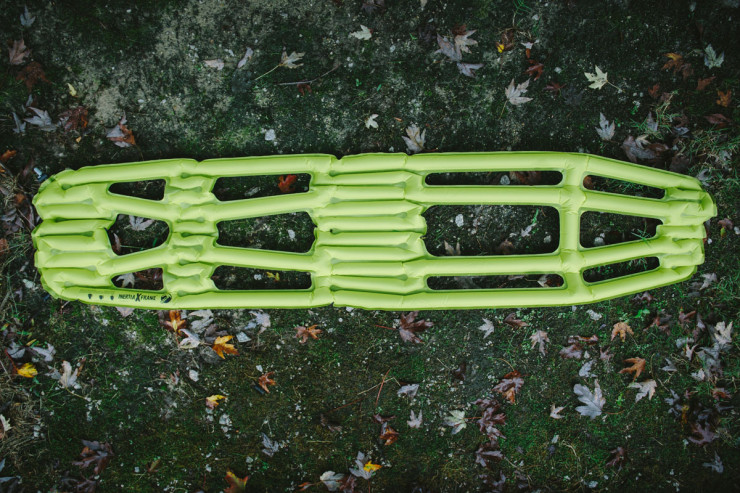
Designed around what Klymit calls body mapping research, the X Frame provides cushion in key pressure zones, while eliminating unnecessary material to reduce weight and pack size. The pressure zones are mostly the head, shoulder blades, buttocks and feet, with enforced areas also tracking back musculature and leg contours. If you’re a side sleeper, take note: the X Frame may not work, depending on your physique. Two of our testers both found it tough to lay on their side for an extended period of time. But if you are between 5′ 8″ and 6′ tall, proportionally ‘normal’, and sleep on your back, the X Frame can be surprisingly comfortable.
- Dimensions: 72″ x 18″ x 1.5″ / 182.8 x 45.7 x 3.81 cm
- R-Value: Dependent on Sleeping Bag
- Packed Size (as tested): 3.5″ x 6″ / 8.89 x 15.2 cm
- Includes: Dry Air Pump, stuff Sack, patch Kit
- Fabric: 30D Polyester Top / 75D Polyester Bottom
- Price: $80
- Weight (as tested with pump/sack/kit): 10.6 ounces / 301 grams
BIKEPACKING.com’s take: “The X Frame is about as light and small as possible for a full length sleeping pad, of any type. It inflates in a matter of four or five breaths; I’m not sure why they included a hand pump, it’s not necessary at all. It’s also not terribly expensive at $65. On the downside, it’s extremely challenging to deflate completely and roll up; there’s always a little bit of air that doesn’t quite escape. Overall the X Frame is an interesting concept and may be a good option for a racer who needs a little cushion with very little weight penalty, or a back sleeper who doesn’t move around much.” – Logan
Therm-a-rest NeoAir Xlite (Regular)
Weighing in at just 337 grams, yet boasting a thick and comfy design with a 3.7 R-value that packs down to the size of a Foster’s beer can, it’s easy to presume Therm-a-rest’s NeoAir Xlite is the go-to sleeping pad for ultralight bikepacking. We’ve tested the NeoAir for almost a year now and can’t find much to complain about. In the past, some folks grouched over the crinkly noise factor; rest assured that Therm-a-Rest redesigned the NeoAir XLite in 2015, giving it a softer, quieter fabric.
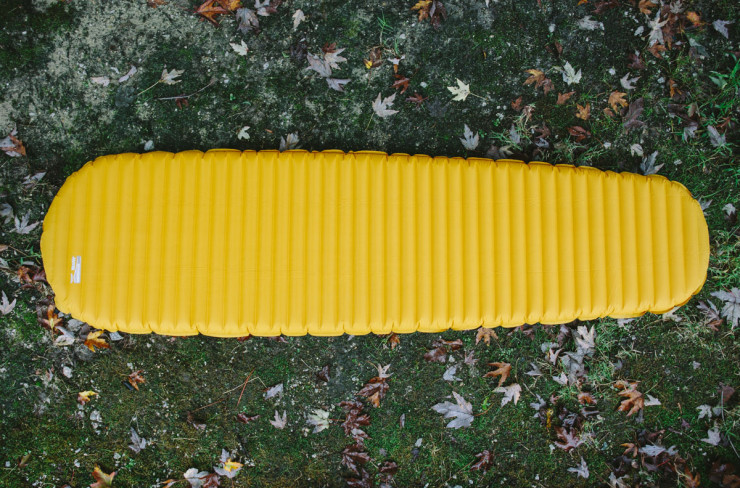
Despite being one of the smallest packing and lightest sleeping pads on test, the Xlite makes no sacrifice to comfort. At 2.5″ thick, it’s the second most plush option listed here, and one of the most comfortable. The horizontal internal baffles offer good stability and support, although the edges seem to have a little fall-off due to the rather narrow width of the pad. The Xlite is perfect for side-sleepers, while broad shouldered back sleepers may find that the pad feels a bit narrow.
Perhaps the only gripe to make about the Therm-a-Rest NeoAir XLite is its $160 price tag. For $60 less, Sea to Summit’s UltraLight Mat weighs just a couple ounces more, is almost as comfortable, and packs even smaller. Undercutting it by $70, Klymit O Zone even includes an integrated pillow. However, neither offer the comfort and 3.2 R-value that makes the Xlite a perfect 3+ season pad.
- Dimensions: 72″ x 20″ x 2.5″ / 183 x 51 x 6.3 cm
- R-Value: 3.2
- Packed Size (as tested): 3.75″ x 8″ / 9.52 x 20.32 cm
- Includes: Stuff sack, patch Kit
- Fabric: 30D Rip-stop Nylon Top / 30D Rip-stop Nylon Bottom
- Price: $160
- Weight (as tested with stuff sack/repair kit): 11.9 ounces / 337 grams
BIKEPACKING.com’s take: “For the longest time, I convinced myself that my ProLite 3 Short was all I needed for ultralight camping. Until I tried the full length Xlite. As a side sleeper, it redefined my notion of a good night’s sleep under the stars, with the added bonus that it rolls down to a package the size of a well stuffed burrito. Yes, it feels a little delicate, and is best handled with TLC. But over the 18 months I’ve used it, mine has only suffered from two punctures, both easily repaired. Other than the steep price, the only downside worth mentioning is the time it takes to inflate, compared to thinner pads. It’s never a task I look forward at night, even if I know it will guarantee I’ll sleep like a baby. Similarly, I’d advise playing around with air pressures – I blow mine up a few breaths short of full for the most comfortable sleep.” – Cass
Klymit Inertia O Zone
With weight conscious bikepackers and hikers in mind, Klymit has once again stripped away unnecessary material and focused on ultralight design, packability, and durability. The surprisingly comfortable Inertia O Zone has several innovative features. Aside from skimming weight, the byproduct from these cutout areas are what Klymit calls ‘loft pockets’. Theoretically, these allow a down bag to settle in to the pockets and retain loft, and in turn, retain R-value. We haven’t had the chance to test the pad in cold weather yet, so will update this post when we do.

Another great feature of the O Zone is an integrated pillow. The pillow has a separate valve, allowing it to be inflated and adjusted independently, while its integration ensures it stays in just the right position. Additionally, the pillow’s ‘X’ cutaway design centers your head on the pillow. The valves on both the pillow and the body of the mat feature an easy to use push-pull mechanism; pop it out to inflate, and push it in to prevent air from escaping. Speaking of inflation, the minimal volume provided by the cutouts allow this pad to be fully inflated in 5 or 6 breaths. It deflates easily as well.
One aspect worth noting about the O Zone, and the X Frame too, is the dual material Klymit use in their construction. Both pads benefit from 40-deneer nylon on the top and 75d nylon on the bottom. 75d is a thicker material than any of the other pads listed, with over twice the density of most. This translates into improved durability and resistance to puncture.
- Dimensions: 72″ x 21.5″ x 1.75″ / 183 x 54.6 x 4.4 cm
- R-Value: Dependent on Sleeping Bag
- Packed Size (as tested): 3.5″ x 7.5″ / 8.89 x 19.05 cm
- Includes: Stuff sack, patch Kit
- Fabric: 30D Polyester Top / 75D Polyester Bottom
- Price: $90
- Weight (as tested with stuff sack/repair kit): 13.4 ounces / 381 grams
BIKEPACKING.com’s take: “The Klymit Inertia O Zone is the clear winner between the two Klymit mats we tested. Its compact packed size (roughly equivalent to a 12 oz. soda can) and the effortless inflation (5-6 breaths) are hard to beat. Back-sleepers are in for a treat. The side baffles reduce the side slippage I’ve often experienced with other pads. Best of all, when the pad is inflated just slightly under its max capacity, the deep baffles actually provide some lumbar support. The integrated pillow is comfortable, doesn’t slip out from under your head, and the pocket design cradles your noggin. However, side sleepers may not be as comfortable – the dependent shoulder can creep in to one of the loft pockets, leaving it without any supportive cushioning. Fortunately, the integrated pillow can be flipped down onto the pad’s main “body”, which allowed shoulder to rest at the level of the air-filled baffles. It was a great solution for me, but may not work for taller users. Also, folks with less naturally padded hips than my own might feel some discomfort on their sides due to the loft pocket design. I haven’t yet had the opportunity to use the O Zone in cold weather, but the theory that the sleeping bag’s loft creates its “R-value” is pretty compelling. I’d be surprised if this pad could really do the job in cold weather, but then again, I would have never thought it could be as comfortable as it is. We’ll make sure and update this once we’ve put it through the climate test.” – Virginia
Sea To Summit UltraLight Mat (Regular)
With a claimed weight of 12.5 ounces (ours weighed just over 14 ounces with the stuff sack and repair kit), and a packed size slightly larger than a standard water bottle, Sea to Summit’s UltraLight Mat is a great option for space-conscious bikepackers. The most unique feature of the UltraLight Mat is the dot-welded construction— its Air Sprung Cells are formed by a matrix of dot welds, and function like individual coils in a pocket-sprung mattresses. This creates a quilted appearance and a comfortable solution, that’s also much more stable and grippy than the baffle designs typical to most inflatable mats. The 40 deneer fabric offers a nice balance between weight and durability; it is 25% thicker than the 30d face fabric used on several other pads, which should make it substantially more resistant to abrasion and punctures.

The mat features a large dual-function valve that works extremely well for both inflating and deflating the pad. The outer aperture offers quick deflation via a large volume opening. The second aperture of the valve includes a one way-flap which permits air to enter, but prevents it from escaping between breaths. The flap can be also be pressed to release small amounts of air in order to fine tune the pressure of the pad. It’s also worth noting that this pad inflates with very little effort… about 10 breaths.
The UltraLight Mat is the widest pad of the group at a little over 21.25″. Its hearty width, paired with a lower profile, makes it incredibly comfortable for back sleeping. We’ve sometimes found that with thicker, narrower pads, it can be a struggle to find a comfortable spot for your arms, especially with a wider bag or quilt. This isn’t the case with the UltraLight.
- Dimensions: 72″ x 21.5″ x 2″ / 183 x 55 x 5 cm
- R-Value: .7
- Packed Size (as tested): 3″ x 7.5″ / 7.62 x 19.05 cm
- Includes: Stuff sack, patch Kit
- Fabric: 40D Rip-stop Nylon Top / 40D Rip-stop Nylon Bottom
- Price: $100
- Weight (as tested with stuff sack/repair kit): 14.1 ounces / 401 grams
BIKEPACKING.com’s take: “At a shade over 2-inches thick, I find the UltraLight Mat to be more than comfortable. To achieve its ethereal weight, the UltraLight Mat had to be constructed without any additional insulating elements, and the R value is quite modest. With that said, it has kept me relatively warm in temperatures as low as 38ºF. It’s priced within reach of its peer products, but might have an edge over most of them with the dot-welded construction and clever high-volume valve. All in all, another great product from Sea to Summit.” – Christophe
Thermarest NeoAir Xtherm (Regular)
While the Xtherm is similar to the Xlite in both form and comfort, Therm-a-rest have boost its R-value to 5.7 using an internal stacked multi-layer reflective barrier. This redirects body warmth back towards you. As such, the Xtherm has the highest R-value of all the pads reviewed, yet still weighs less than a pound. It’s warm enough for winter expeditions, and light enough for bikepacking.

Unlike the Xlite, the Xtherm is also constructed with a 70-deneer rip-stop nylon bottom, making it far more durable that its lighter brother. The biggest downside to this pad is undoubtedly its $200 price tag. But if you aim to camp in sub-freezing temps, the Xtherm may well be your saving grace.
- Dimensions: 72″ x 20″ x 2.5″ / 183 cm x 51 cm x 6.3 cm
- R-Value: 5.7
- Packed Size (as tested): 4.25″ x 7.5″ / 11.43 cm x 19.05 cm
- Includes: Stuff sack, patch Kit
- Fabric: 30D Rip-stop Nylon Top / 70D Rip-stop Nylon Bottom
- Price: $200
- Weight (as tested with stuff sack/repair kit): 15.8 ounces / 447 grams
BIKEPACKING.com’s take: “The Xtherm is just as comfortable as the Xlite, with the addition of a thicker bottom fabric for durability and high R-value. These combine to make the it a no-brainer for winter camping and shoulder seasons alike. It gets a little hot in 80F+ humid weather though.” – Logan
Big Agnes Q-Core SL (Mummy, Regular)
The Big Agnes Q-Core SL comes in several widths and lengths, in both rectangle and mummy design. We tested the 20 x 78 x 3.5″ Mummy variation; it’s worth noting that there is a shorter 72″ version, weighing in at about 1 ounce/28 grams lighter. Ours packed nicely into a 3.5 x 10″ burrito-sized roll that can easily fit in a fork-mount cage, be strapped to a rack, or stowed in a frame bag.

The Big Agnes is the thickest and most plush pad on test. The vertically-aligned dimples, AKA Alternating I-beam Construction, give the pad a stable and extremely comfortable feel, while the slightly loftier side rails keep you from rolling off of the pad. The fabric is a little slippery, but it’s not too bad. Big Agnes also integrated their X-Static synthetic insulation which provides a fairly high 4.5 R-value. The pad uses a durable twist inflation valve. A repair kit is nicely stowed in a small pocket on the inside end of the stuff sack.
- Dimensions: 72″ x 20″ x 3.5″ / 183 x 51 x 8.9 cm
- R-Value: 4.5
- Packed Size (as tested): 3.5″ x 10″ / 8.9 x 25.4 cm
- Includes: Stuff sack, patch kit
- Fabric: 30D Rip-stop Nylon Top / 30D Rip-stop Nylon Bottom
- Price: $160
- Weight (as tested with stuff sack/repair kit): 19.9 ounces / 563 grams
BIKEPACKING.com’s take: “The Q-Core is as cozy as they come, but you have to pay a little price in weight and space. I found it to be as comfortable, if not more comfy, than a lot of beds. Some folks complain about the mesh stuff sack, but mine held up well. I used this pad on our 6-month trip in 2014. Well, to clarify, not this pad… this is the second one I tried. The first one developed a ‘slow-leak’ after five months of rugged use on our trip through Africa. Unfortunately it couldn’t be patched, so Big Agnes replaced it, no questions asked.” – Logan
Comparison and Conclusion
When it’s all said and done, the Therm-a-rest NeoAir Xlite gets our top pick, thanks to its amazing combination of comfort, R-value, minimal weight and small pack size. The Sea To Summit Ultralight Mat is a close runner up and the The Klymit O Zone a tight third.
Inevitably each pad tested has its pros and cons, so we’d recommend considering all options based on your intended use, sleeping style, space preference, budget, and concern for durability. In a nutshell, the minimal Sea to Summit Ultralight Mat is a well-rounded option for anyone who can’t quite afford the Xlite. The more minimal Kymit O Zone features a nifty pillow, as well as being incredibly small, light and well priced. The Big Agnes Q-Core SL is definitely the plushest and most comfortable pad we tried. And the Xtherm is hands down the best option out there for winter and alpine camping.
Sleeping Pads Compared
| Product | Weight | R-Value | Bottom Fabric Deneer | Thickness |
|---|---|---|---|---|
| Klymit Inertia X Frame |
10.6 oz
301 g
|
N/A | 75d | 1.5″ |
| Therm-a-rest NeoAir Xlite |
11.9 oz
337 g
|
3.2 | 30d | 2.5″ |
| Klymit Inertia O Zone |
13.4 oz
381 g
|
N/A | 75d | 1.5″ |
| Sea To Summit Ultralight Mat |
14.1 oz
401 g
|
0.7 | 40d | 2″ |
| Therm-a-rest NeoAir Xtherm |
15.8 oz
447 g
|
5.7 | 70d | 2.5″ |
| Big Agnes Q-Core SL Mummy |
19.9 oz
563 g
|
4.5 | 30d | 3.5″ |
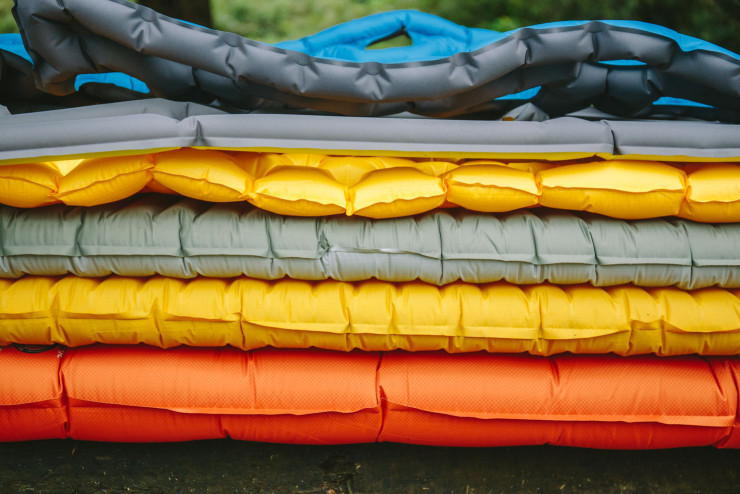
If all else fails…
Most of us here use an inflatable air mattresses. However, we won’t deny they have their downsides; they’re expensive and prone to punctures. And one thing’s for sure. Nothing is more frustrating than waking up to top up your pad 3 times a night. Like any ultralight gear, these pads need to be taken care of, especially in thorny desert environs, and packed carefully to avoid abrasion. All include a field repair kit, though slow leaks can often be frustratingly hard to find. If a pad can’t be fixed, most companies are happy to mail a replacement, not that this is always logistically ideal…
Thermarest Z-Lite Sol (regular)
… so if you are risk averse, have the back for it, or budget is tight, the Therm-a-rest Z-lite Sol is probably the most comfortable closed cell foam mat available. While it can’t match an air mattress for overall plushness, the ability to throw it down brazenly without regard to surfaces is a definite bonus, whether it be during a lunch break, or camping for the night. The accordion fold also makes it easy to store, and panels can be removed to reduce the weight and volume. It’s pretty easy to do the math; each panel is about 5.14″ (13 cm) and 1 ounce (28 grams).
- Dimensions: 72″ x 20″ x .6″ / 183 cm x 51 cm x 1.5 cm
- R-Value: 2.6
- Packed Size (as tested): 20″ x 6″ x 5″ / 50.8 x 15.2 x 12.7cm
- Price: $45
- Weight (as tested): 14.8 ounces / 419 grams
FILED IN (CATEGORIES & TAGS)
Bikepacking Gear
Camping Gear
big-agnes sleeping-gear-for-bike-touring sleeping-gear sleeping-pads-for-bike-touringPlease keep the conversation civil, constructive, and inclusive, or your comment will be removed.
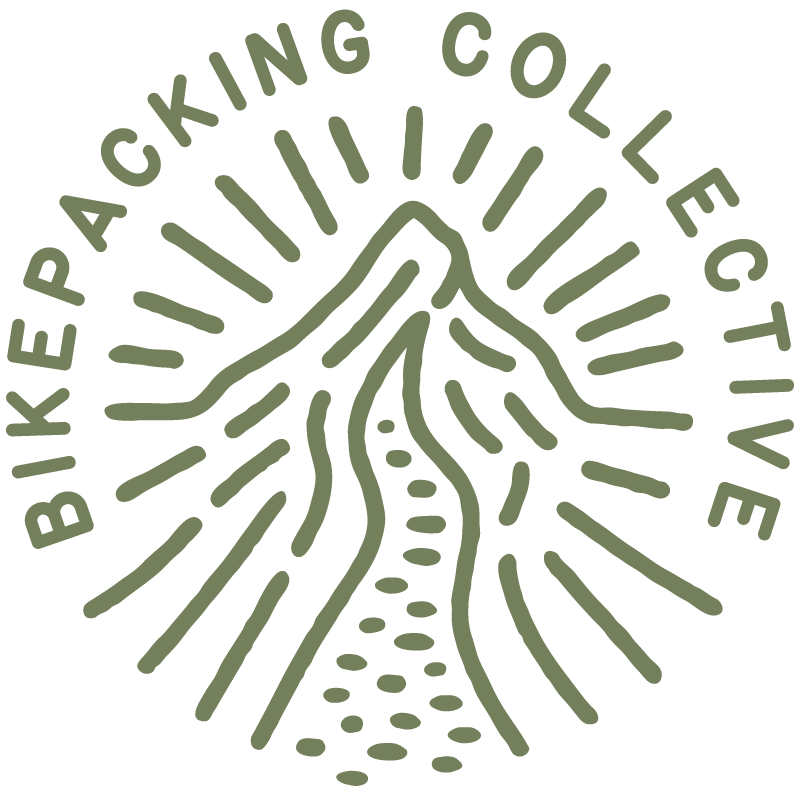
We're independent
and member-supported.
Join the Bikepacking Collective to make our work possible:











